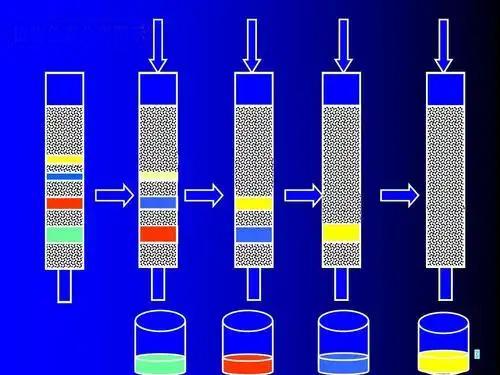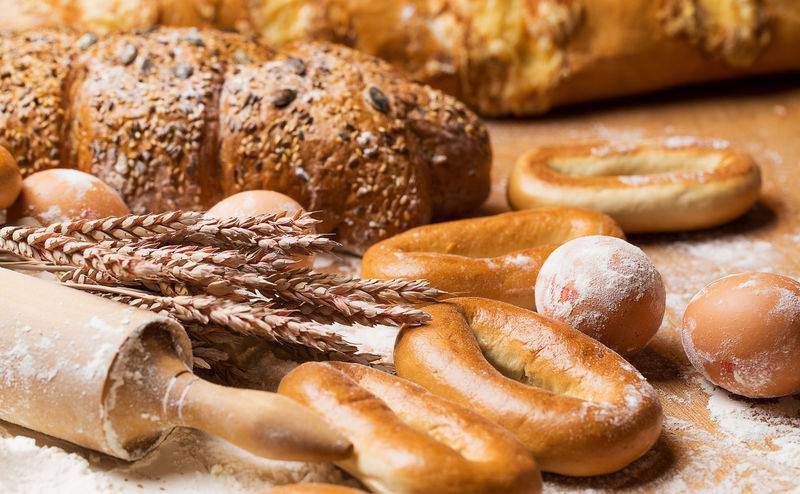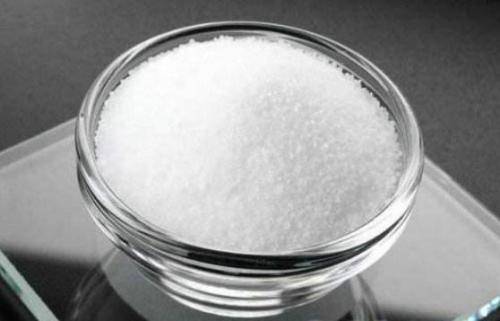Natural Oligosaccharide Ingredients Elevate Dietary Supplements Innovation
機能オリゴ糖など, as key functional ingredients in the global health food industry, are increasingly attracting international attention. Currently, mainstream varieties such as isomaltulose and fructooligosaccharides have achieved a stable annual production capacity of approximately 150,000 tonnes in China. With continuous breakthroughs in high-purity production technology and accelerated domestic production, Chinese-manufactured oligosaccharide products have significantly improved in purity, stability, and applicability, expanding their application scope to better meet the global health food market's demand for high-quality, customizable ingredients and providing international customers with more competitive solutions.
Green Spring Technology specialises in supplying high-purity oligofructose powder, which can be widely used in beverages, dairy products, baked goods, health supplements, and infant formula. As a reliable raw material supplier, we help companies increase fibre content in their products, optimise formula health characteristics, and support customers in developing end products that align with modern health consumption trends, thereby assisting brands in achieving differentiated upgrades and enhanced market competitiveness.
1 Production Method
Functional oligosaccharide production technologies are becoming increasingly diverse, with mature production processes such as extraction, chemical synthesis, fermentation, and enzymatic conversion now available to meet the large-scale and customised production needs for various types of oligosaccharides.
1. 1 Extraction Method
The extraction method is suitable for oligosaccharides that are abundant in nature and have relatively simple separation processes, such as soybean oligosaccharides. These products primarily consist of cotton seed oligosaccharides and stachyose, which are typically extracted from whey protein isolate, a by-product of soybean meal processing. Typical processes include whey salt precipitation, ultrafiltration protein removal, activated carbon decolorisation, ion exchange purification, concentration, and spray drying, resulting in a soybean oligosaccharide product with approximately 75% purity, comprising about 18% stachyose, 6% raffinose, and 24% sucrose [3]. This method features a clear process flow and is suitable for large-scale production.
2.2 Chemical Method
The chemical method is an important technological approach for modifying the structure and functionalising oligosaccharides, enabling the conversion of natural oligosaccharides into products with distinct physical, chemical, and functional properties.Chitosan, widely used in the market, is primarily produced via chemical methods: industrial by-products such as crab shells and shrimp shells are used as raw materials, treated with alternating acid and alkali solutions to obtain chitin, then deacetylated under high-temperature conditions using a 40%–60% alkali solution, and finally dried to obtain the final product.Current research and development efforts are focused on developing chitin derivatives with different properties and water solubility through molecular modification techniques such as acylation and carboxymethylation, thereby expanding their application scope [4].
1.3 Fermentation Method
Fermentation is one of the key technological approaches for producing microbial-derived oligosaccharides. By regulating microbial cultivation and fermentation conditions, the efficient accumulation and synthesis of target oligosaccharides can be achieved.
Taking chitin as an example, this natural component is a naturally occurring alkaline polysaccharide found in the cell walls of fungi, widely present in genera such as Rhizopus, Mucor, and Aspergillus. Currently, the fermentation method for producing chitin remains in the stage of process optimisation and industrialisation. Research indicates that strain improvement and adjustments to fermentation strategies can effectively enhance its yield.
1.4 Enzymatic conversion method
As the core process for producing functional oligosaccharides, the enzymatic conversion method relies on highly efficient specialised enzyme preparations to selectively convert disaccharides or polysaccharides into target oligosaccharides. It features mild reaction conditions, high conversion efficiency, and stable product quality. China has basically achieved domestic production of the enzyme preparations required for this process, laying a solid foundation for the industry's sustainable development.
Typical production processes and products:
・Oligo-isomaltose: Using starch as a raw material, it is first hydrolyzed by high-temperature-resistant α-amylase, fungal amylase, and β-amylase to produce maltose, which is then converted by α-glucosidase, followed by purification and concentration to obtain the final product with a yield of approximately 50%;
· Oligofructose: Produced by the action of fructose transferase on high-concentration sucrose, or by treating inulin with inulinase to produce high-purity fructose-fructose type oligofructose;
· Xylooligosaccharides: Produced using corn cobs as raw material, which are steamed and expanded to extract hemicellulose, followed by enzymatic hydrolysis with xylanase, and then purified through centrifugation, microfiltration, decolorisation, and ion exchange to obtain a product with approximately 70% purity;
· Other oligosaccharides: such as galactooligosaccharides and lactulose, which can be produced by converting lactose and sucrose using galactosidase and then separating and purifying the products [6].
Enzyme conversion technology is mature and versatile, making it an important technical approach for achieving high-quality, large-scale production of functional oligosaccharides.
Green Spring Technology's enzymatic process advantages:
Green Spring Technology leverages advanced enzymatic conversion technology to specialise in the research, development, and production of high-purity oligosaccharides ingredient solution.
The company uses high-efficiency specialised enzyme preparations and precise process control technology to significantly improve product yield and purity while effectively reducing by-product residues. Its oligofructose products feature stable composition, pure taste, and broad application adaptability, making them suitable for use in beverages, dairy products, health foods, and special dietary products. This provides customers with high-performance, reliable raw material solutions to support product upgrades and market innovation.
2 Functional Oligosaccharide Purification Technology
Conventionally produced oligosaccharide products typically have a purity below 70%, suitable for general food and health supplements. However, due to the presence of glucose and sucrose, they fail to meet the needs of specific populations. Currently, the industry widely adopts purification processes such as enzymatic methods, chromatography, and membrane separation to elevate oligosaccharide purity to over 95%, expanding their application in high-quality health products.
2.1 Enzymatic Purification
Enzymatic purification uses specific enzyme preparations to target and remove or convert by-products, representing an efficient and environmentally friendly purification method. For example, in the production of oligofructose, glucose oxidase can effectively reduce glucose content, mitigate inhibition of conversion enzymes, and enhance production efficiency. Following ion exchange treatment, the final product purity can reach approximately 98%, significantly improving product quality and application scope.

2.2 Fermentation
Fermentation is one of the key processes for producing high-purity oligosaccharides. It utilizes microorganisms such as yeast to efficiently remove impurities (e.g., glucose, sucrose), thereby significantly enhancing product purity . For example, after yeast fermentation of soybean whey as a substrate, the content of cotton seed sugar and water-soluble sugar can be increased to over 97%, with sucrose being almost completely removed. This process is also applicable for the purification of oligosaccharides such as isomaltulose and fructooligosaccharides, enabling the large-scale production of high-purity products like IMO-900, effectively supporting the application needs of high-end food and health ingredients [7-8].
2.3 Chromatography
Chromatography separation technology has become the mainstream method in oligosaccharide purification processes, with sequential simulated moving bed (SSMB) technology being particularly mature, enabling efficient separation of monosaccharides, disaccharides, and oligosaccharides.
This technology not only enables continuous production of oligosaccharides with purity exceeding 95%, such as oligosaccharides of isomaltulose, oligosaccharides of fructose, and oligosaccharides of galactose, but also simultaneously recovers high-purity by-products like glucose and fructose, achieving comprehensive resource utilization, significantly reducing production costs, and enhancing industrial benefits [9].
2.4 Nanofiltration Membrane Method
Nanofiltration membrane technology is an efficient and environmentally friendly separation and purification method that can precisely remove small molecular impurities (such as glucose, fructose, and sucrose) from oligosaccharide solutions, thereby significantly improving product purity. This method applies to the purification of various oligosaccharides, such as:
· Purifying isomaltulose (IMO) into high-purity grades such as IMO-900, with functional components exceeding 95% and monosaccharide content below 2%;
· Increasing the purity of oligofructose raw materials from approximately 54% to over 95%, better meeting the ingredient requirements for high-end food and health products.
Additionally, this technology can recover and reuse separated small-molecule sugars (such as fructose and glucose) for the production of natural sweeteners like fructose syrup, achieving efficient resource utilization and reducing overall production costs [10].
Green Spring Technology integrates advanced purification processes such as enzyme-assisted technology, chromatography separation, and nanofiltration to specialise in providing high-purity, low-impurity functional oligosaccharide products. We can stably supply various oligosaccharides with a purity of over 95%, effectively reducing residues of glucose, sucrose, and other substances, and meeting formulation requirements for low GI, clean label, and high-end health foods. Additionally, through the resourceful utilisation of by-products, we can help customers optimise overall costs and enhance product competitiveness. Green Spring Technology is committed to providing reliable high-end raw material solutions and comprehensive technical support for your product upgrades and innovations.
3 Applications of Functional Oligosaccharides
Functional oligosaccharides, due to their unique physiological properties, have diverse applications in food and health supplements, commonly used to regulate intestinal environment, promote mineral absorption, and support overall health protection.
Fructooligosaccharides are widely used in products such as yogurt, beverages, cheese, fillings, ice cream, chocolate, candies, and meat products. Galactooligosaccharides are primarily used in premium infant formula and other dairy products to provide functional value-added benefits.
In the Chinese market, oligosaccharides are emerging as natural functional ingredients, widely used in sugar-free or low-sugar foods, weight management products, senior nutrition products, and daily health supplements. High-purity oligosaccharides serve as premium sweetness alternatives, suitable for formulating blood sugar-friendly foods, gut-healthy snacks, premium infant formula products, and nutritional supplements for specific populations, providing critical support for product innovation and functional upgrades [11–12].

Green Spring Technology Co., Ltd. consistently supplies a variety of high-quality oligosaccharide products, including high-purity fructooligosaccharides (FOS), galactooligosaccharides (GOS), isomaltulose (IMO), and soy oligosaccharides (SBOS). Our products feature high purity, excellent solubility, and strong thermal stability, making them suitable for use in beverages, dairy products, baked goods, health supplements, and special dietary products for specific populations.
By choosing Green Spring oligosaccharide ingredients, you can effectively enhance the gut health benefits of your products, support ‘clean label’ and functional claims, reduce sucrose usage, and develop low-sugar/sugar-free premium products. This provides a stable and reliable solution to help your brand establish a competitive edge in the health food market.
Contact Green Spring Technology at helen@greenspringbio.com or WhatsApp: +86 13649243917 to request free samples and technical support. Let's collaborate to infuse core values into your next generation of health foods!
参照
一石二鳥です王Naiqiang。[1]中国におけるオリゴ糖の研究状況と展望[j]。罰金専門化学ローソクを消し15(12):1 ~ 5ますか。
【2】劉鳳、楊海軍。国内外におけるオリゴ糖応用の現状と開発動向[j]。^日本学術振興会、2009年、38(4):53-56。
【3】汎Lihong。大豆オリゴ糖の抽出プロセスに関する研究[j]。^北区(2012年)、9頁。
従四位下[4]Hongfang。キトサンの調製、修飾、吸着特性に関する研究[d]。蘇州:蘇州大学、2005年3月25日。
【5】王偉平、杜育民、胡家軍。高収量キトサンの変異原性育種[j]。安徽農業科学,2011,39(3):1266-1267。
【6】于蓉、王思流。酵素法による機能性オリゴ糖の調製に関する研究[j]。中国食品と栄養,2009(12):32-35。
【7】王文夏、劉暁燕、宋春立。 微生物発酵による機能性大豆オリゴ糖の精製プロセス条件に関する研究[j]。中国の調味料,2011,36(4):27-31。
-
Prev
Natural Ingredient Fructo Oligosaccharide for Healthier Animal Nutrition Solution
-
次
Oligofructose Ingredients Elevate Innovative Functional Food and Beverage Products


 英語
英語 フランス
フランス スペイン
スペイン ロシア
ロシア 韓国
韓国 日本
日本




